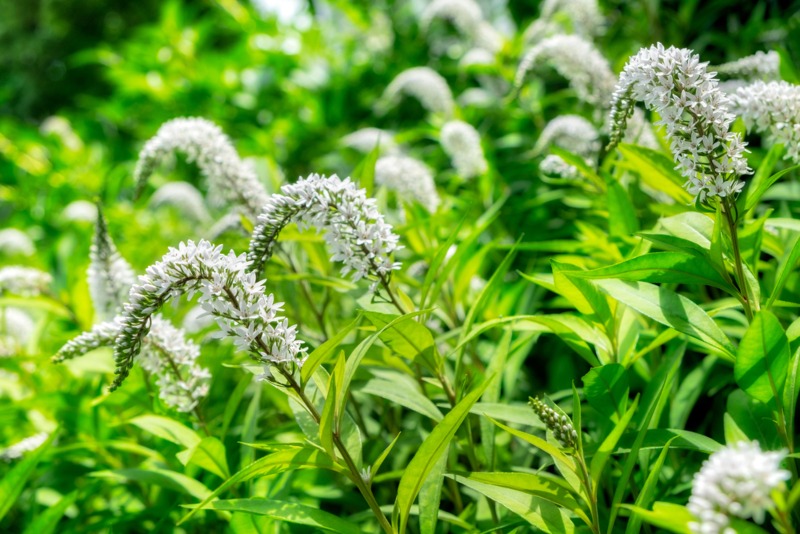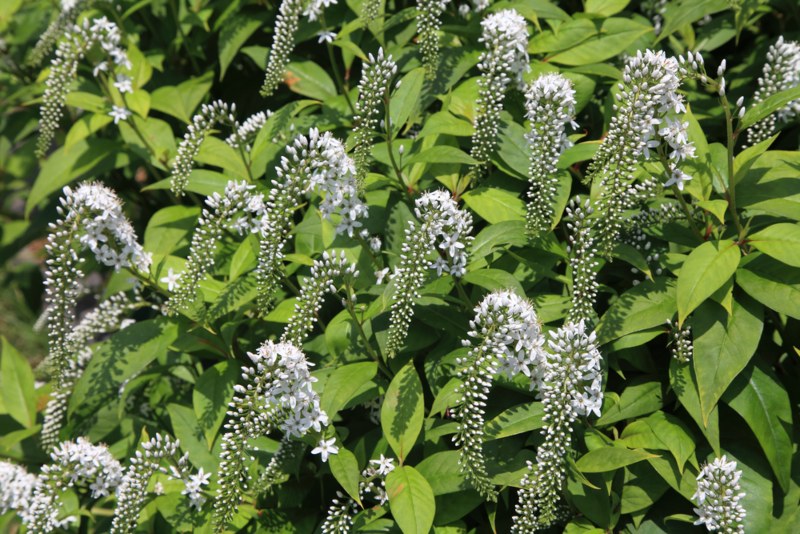The gooseneck loosestrife has an unusual arrangement of flowers with its curved stems and a multitude of small white flowers. It can be grown in zones 3 through 8 and can get as tall as 3′. It blooms for a long time, keeping blossoms from July through September. Each of its racemes can grow to 12″ in length, making this a showy plant that is often used in cut flower arrangements.
When the fall begins, this plant’s foliage will turn bright orange, adding its appeal in flower beds. Some larger varieties may need to be staked when they reach their full height.
Light and Temperature Requirements
The gooseneck loosestrife needs plenty of sun each day. The best place to put it is in full sun, but it will also tolerate part shade if it gets direct sun from three to six hours every day. If it is limited in its daily sunlight, however, it will not grow as much and will make fewer flowers. Having less sunlight will also make it leggy. This plant is able to tolerate cold temperatures even when it’s freezing.
Watering
The gooseneck loosestrife needs a lot of water in order to grow well and sprout its flowers. It likes the soil to be moist all of the time, but it is tolerant of having drier soil as well as soil that occasionally lets the plant stand in water. This plant needs a regular watering routine to keep it healthy and blooming. However, getting too much water too often can result in the plant getting rust on its leaves. The moisture can also attract slugs and snails. Get into a rhythm of watering this plant so that the soil stays slightly moist instead of soaking wet. The ideal place to plant it would be next to a pond or creek where it would have access to water all of the time.

Soil & Fertilizing
This plant isn’t picky about its soil. It can live just fine in poor soil, but it likes soil with a lot of organic materials in it better. One reason that it likes being next to ponds, marshes and streams so much is that the soil is highly rich with organic material. Place mulch over the soil in the winter to help it to get through the winter more easily. This will also trap some moisture in the soil. This plant grows very quickly, so it doesn’t need to be fertilized as long as it’s in good soil. If it is in poor soil, however, it can use some fertilizer at the beginning of the spring growing season. Use a balanced, 10-10-10 fertilizer.
Deadheading and Pruning
In the fall, the flower stalks will start to wilt. Pruning these stalks away during the fall makes the whole plant look better. For the winter, cut everything back, all the way to about 2″ tall. You can keep the crown protected by covering it with a little mulch after it has been pruned.
Propagation
The gooseneck loosestrife is an aggressive grower, and it can invade flower beds and try to overtake them. It’s a good idea to divide it about every two or three years. Do the dividing in the spring or fall. You will need to dig up the rhizomes and remove about a third of them. Then, you can plant them elsewhere, such as in a container, or simply get rid of them so that the plant doesn’t get out of hand and become overcrowded.




